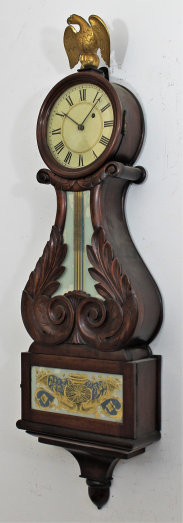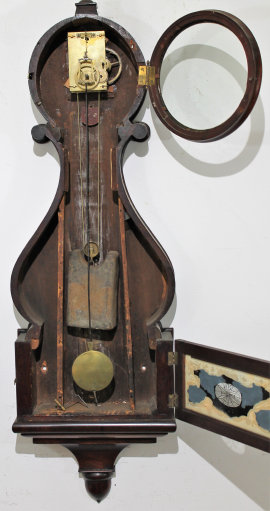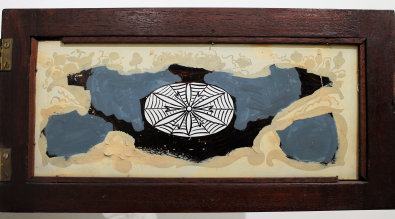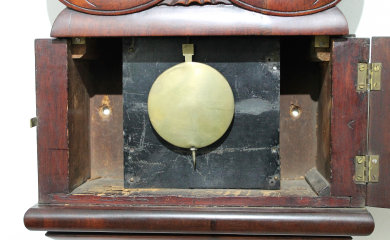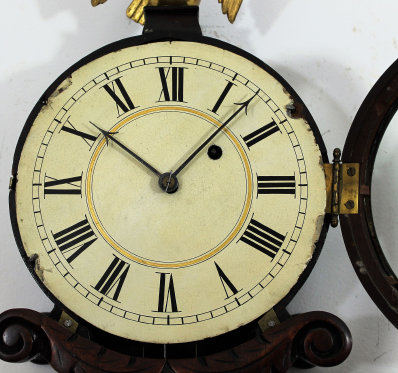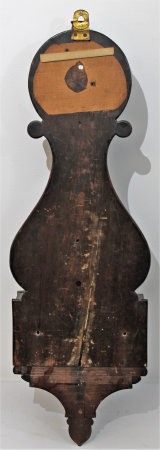Antique American Clocks January 2021
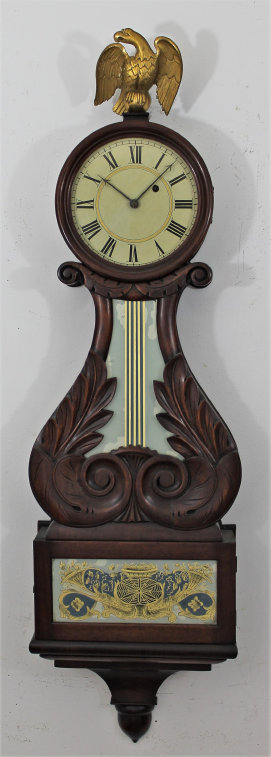
192. $1500
Unsigned box lyre banjo, ca. 1830. The “Elegant Harp Pattern” (lyre) style was popular in
the 1820’s and lead to the incorporation of this style into timepieces, initially by John Sawin (Foley, Willard’s Patent Time Pieces,
2002). The style had two forms: the true lyre and the box lyre (as found here). The box lyre allowed the clockmaker to
use a standard banjo movement, and as a result, box lyres are more common. This lyre is 40 inches long from the top of the carved
and gilded wooden eagle finial to the tip of the base. All three glasses are old, the tablets likely original and touched up
in the backgrounds. The throat tablet has the representative harp strings and the lower tablet is a common design found in lyre
clocks (see page 136 of Foley’s book for a similar example by Noyes). The case is carved mahogany, the dial iron with the original
paint, I think; it is unsigned. Note the gold inner ring and the arrow hands. The 8-day movement is unsigned, as is typical,
with a keystone pendulum and a straight-click pawl. There are two places where the cabinet maker marked the case with a ‘<’,
one is on the box, the other is on the back of the throat piece. The weight is iron and there is an old metal weight shield. The clock is running but stops occasionally. Prices for lyre clocks vary greatly depending on maker and appearance. $1500-$3000.

